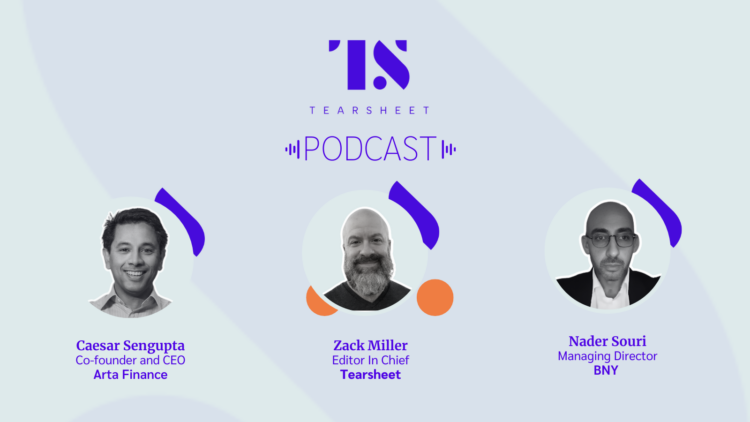As the financial world evolves, open banking and digital transformation are opening up new opportunities. This comes with several challenges for banks and fintechs. In today’s episode, I sit down with Alessandro Hatami. He is a managing partner of Pacemakers, a consulting firm that offers a systematic approach that allows its clients to find the partner that is right for them.
Today we discuss some of these seismic shifts in the fintech industry.
Hatami has a unique background in financial services, spanning both upstart tech companies like PayPal and traditional institutions like Lloyds Bank. His background offers a compelling perspective on the future of financial services. “Financial services is the ideal digital product,” Hatami asserts. “because there isn’t a real tangible exchange,” he says. Yet, despite this potential, many institutions are struggling to embrace digital transformation.
I’ve been saying for years on this podcast that the ability for both larger and smaller institutions to partner – to partner well, at scale, quickly, and deeply – can be a differentiated, defensible model moving forward.
Hatami explains, “They have gone through an evolution. But they haven’t gone through a transformation.” The challenge facing the industry today lies in balancing adaptation with true transformation. from legacy systems to cultural barriers.
Through Pacemakers, Hatami aims to bridge this gap. He wants to improve partnerships between established financial institutions and agile fintech innovators.
Here’s my conversation with Pacemakers’ Alessandro Hatami.
Three stages of financial services innovation
Hatami outlines a three-stage model of innovation in financial services:
- Adapting – Banks begin by adapting existing capabilities to digital platforms.
- Evolving – Institutions develop new digital-only services not possible in traditional branch settings.
- Transforming – The toughest stage is rethinking financial services with a customer-centric perspective.
“What’s on the other side is a financial services proposition. It is not designed to sell a product to an individual. But it’s designed at understanding what the individual needs,” Hatami explains.
Overcoming challenges in fintech partnerships
Successful collaborations between incumbents and fintech face several hurdles:
- Timing mismatches between fast-moving startups and slower corporate processes
- Difficulty in translating innovative propositions into terms that resonate with traditional banks
- Identifying the right internal champion with P&L responsibility
Hatami advises, “You have to explain to the big company what you could do for them. But you have to explain to them in their terms.”
Rise of open banking and banking as a platform
The concept of open banking is transforming the consumption and delivery of financial services. Hatami predicts, “The future in banking will be. The banks will become the gatekeeper of my financial relationship. The bank may or may not deliver the services and products I receive.
“Banking as a platform” is a major shift from the old model where banks made all their products themselves. Now, banks collaborate with others to offer a wider range of services.
Role of AI in reshaping financial services
Artificial Intelligence presents enormous opportunities for the financial sector. Particularly in data processing and pattern recognition. AI will likely support, not replace, human interaction in customer service roles.
“The way I think about AI is about it as an efficient, effective, interesting way of capturing data. Through the new visualization techniques. And also processing gigantic amounts of data,” Hatami explains.
Cultural Transformation: From product-centric to customer-centric
The biggest challenge is shifting from a product-centric to a customer-centric approach. This requires a cultural change. It needs banks to completely reorganize their operations. And change how they measure success.
Hatami notes, “In a customer-centric world, banks must use customer segmentation for their profits and losses. Not just product-based metrics. This requires a complete transformation of how banks operate.”
The Big Ideas
- Digital transformation in financial services is vital. “They have gone through an evolution. But they haven’t gone through a transformation,” Hatami observes. Banks must move beyond adapting existing services. They must reimagine their role in customers’ financial lives.
- Hatami highlights the importance of cultural alignment in partnerships. “You have to explain to the big company what you could do for them, but you have to explain to them in their terms,” he advises. Successful collaborations need mutual understanding and clear communication.
- Open Banking is the future of fintech. “The future in banking will be. The banks will become the gatekeeper of my financial relationship,” Hatami predicts. This shift will change the delivery of financial services.
- Hatami focuses on the role of AI in financial services. “The way I think about AI is as an efficient, effective, interesting way of capturing data,” Hatami explains. While AI offers significant opportunities, human interaction remains crucial in financial services.
- Hatami highlights the shift to customer-centric banking. “In a world where the customer is centric, they go through the segmentation P&L, not the product P&L,” he notes. This fundamental shift requires completely transforming how banks operate and measure success.
Watch the full episode
Listen to the full episode
Subscribe: Apple Podcasts I SoundCloud I Spotify I Google Podcasts
Read the transcript (for TS Pro subscribers)










